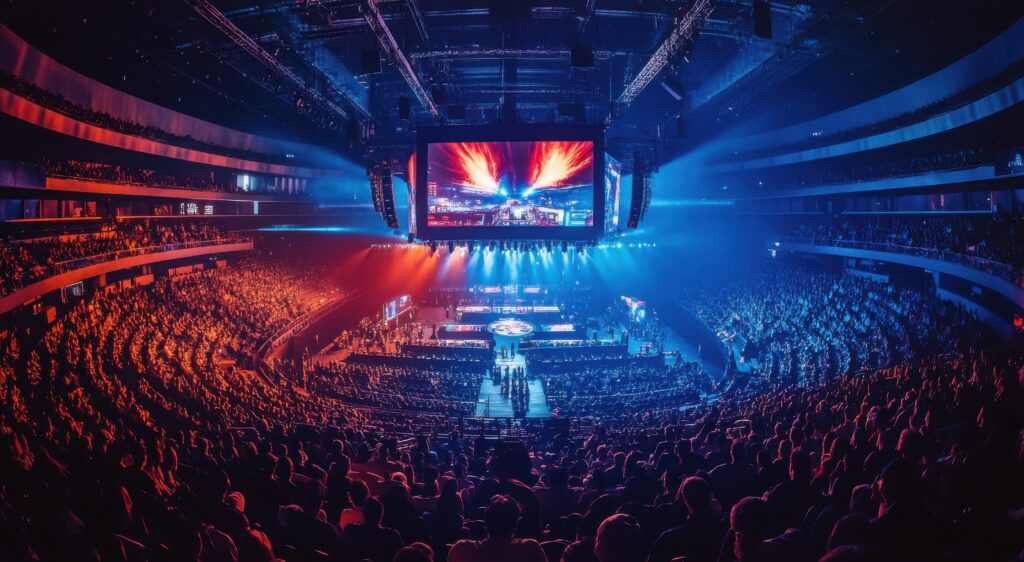The Game is Changing in Live Production
Live production is one of the best examples of how dynamic M&E can be. By their very nature, live events are unpredictable and fluid, both qualities that are central to their thrill. Of course, with that thrill come unique challenges. Still, thanks to advancements in technology, the experiences consumers enjoy while watching live events are becoming more immersive and engaging. 2020 is sure to bring lots of excitement across live sports, awards shows, news and politics, so it’s worth looking at the state of live production, and some of the trends driving change.
Remote Production (REMI) Continues its Ascent
While REMI (REMote Integration) or “at home” production isn’t a new phenomenon, the continued growth of this model is enabling new opportunities. Much of the initial focus on REMI was around cost-savings driven by the benefits of simply not having to bring as many people or as much equipment on site. That has not only opened the door for smaller events to create high quality live productions, but has also allowed for more rapid innovation, as it’s easier to test and deploy new tools and new skills with an “at home” model.
Esports has been a major growth driver for REMI production in recent years, as was highlighted in a December panel hosted by SVG. With everything from political debates to award ceremonies fighting for the attention of a content-laden audience, ensuring that live production is as agile and dynamic as possible is critical. Luckily, a REMI model is one way to help in this area.
Graphics, Special Effects, and the Battle for Audience Eyeballs
A key result of the increase in live events and their distribution across more and more channels is the struggle to hold an audience’s gaze. After all, when there are so many things to watch and so many screens available, the content must be captivating.
Because of this, live broadcasters are becoming increasingly invested in providing a viewing experience that’s as current and exciting as possible. New graphics tools are emerging to enhance viewing experiences in amazing ways. For instance, Discovery Norway is employing 3D models and augmented reality graphics to provide fans of the Norwegian Football League with an unparalleled viewing experience straight out of the future. As explained by Vizrt, the company behind this innovation: “Discovery’s team of Vizrt experts have the time and capabilities to explore possibilities and push themselves further with new ideas to bring the match in the studio closer to viewers.” And, this is only one small example, as everything from Esports to live news are joining in on the phenomenon.
And it matters! Only recently, Democratic debate viewers took to Twitter to complain about a dizzying moving background graphic. Had broadcasters taken advantage of the powerful graphics solutions available, they would have been able to dynamically update that effect, perhaps saving themselves a bit of ridicule in the process.
More Prerecorded Content in the Mix
With advancements in search, AI and archiving technology — much of it available via the cloud — broadcasters now have easier access to more prerecorded content. With swift retrieval times and more editors “at home”, broadcasters can more easily include previously recorded content to enhance the viewing experience. Did that actress who won the Oscar win in a previous year? Quick! Roll the clip. Did the batter just surpass a milestone or break a record? Roll the clip of their first at bat! Viewing experiences are enhanced tremendously by adding prerecorded content into the broadcast and thanks to cloud technology this is another area of rapid innovation.
Social Media is a Central Part of the Live Production Ecosystem
In 2014, Ellen DeGeneres’ Oscar selfie ended the year as the most retweeted entertainment post of the last 12 months, beating out the likes of Justin Bieber and Harry Styles. While it remains the third most retweeted post in the platform’s history, the power of sites like Twitter has only grown since then.
Social media has become such a huge part of the live viewing experience that commentators or broadcasters will actually boast about a trending hashtag or share some of their favorite relevant posts with the audience, and social media engagement brings with it new economic opportunity.
Because of this, broadcasters have become much savvier about how they integrate social media into their live productions. In many cases, the broadcaster has minutes or even seconds to get a highlight out on their social media channels before a fan in the stands posts that same highlight from their phone and pulls the audience to their own feed. Those are lost opportunities for engagement and, ultimately, revenue. Especially for live sporting events, content needs to be edited and distributed quickly to keep fans engaged and extract maximum value. In fact, social media is so critical to how live entertainment brands maintain fans that, even as the Washington Post reported a dip in NBA cable viewership, the league’s social media following and footprint remains at an all-time high with 1.6 billion people engaging on a global basis.
Live Production is Only Getting More Exciting, for Broadcasters and Viewers Alike!
There’s really nothing like the thrill of a good live event, whether it’s the Oscars, a global sporting event, or the Macy’s Thanksgiving Day Parade. These events generate excitement and foster an awesome sense of community among their audiences.
For broadcasters, though, these events also present a range of unique challenges. An increase in content variety has created a more competitive landscape for viewership and, thus, a need for rapid innovation. All this has created more complex operations and Signiant is often behind the scenes making it easy to take advantage of new technologies and empower personnel whether at the venue, back home or in the cloud.
As we see what the next decade has in store, it’s likely that live production will continue to evolve, at an even more rapid pace. It should be fascinating and rewarding to see how broadcasters continue to stay on their toes, and bring audiences to their feet.


